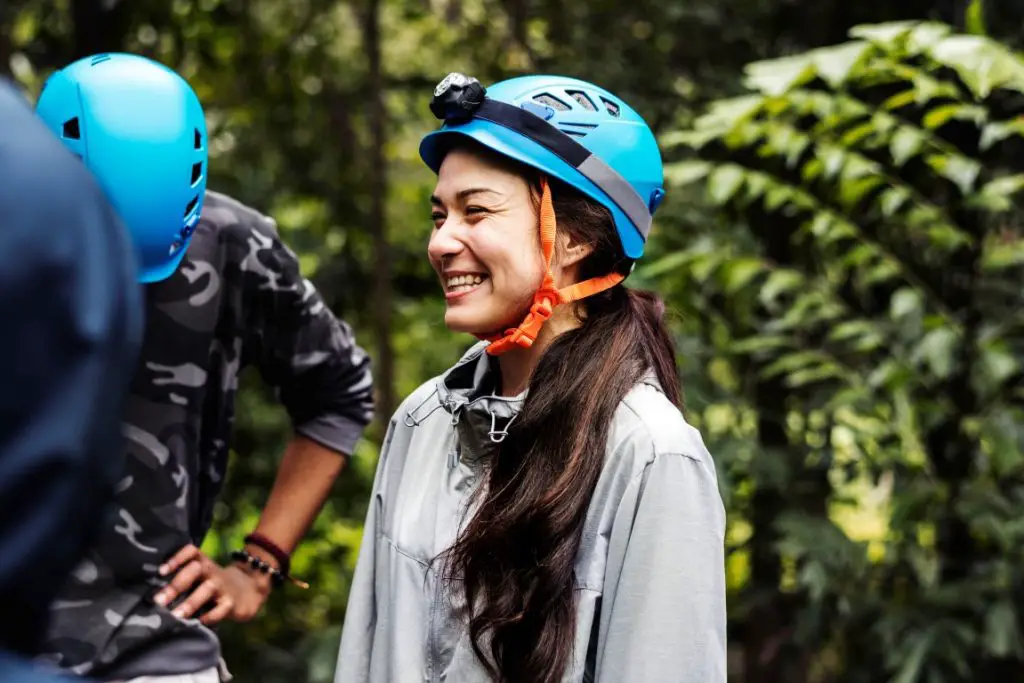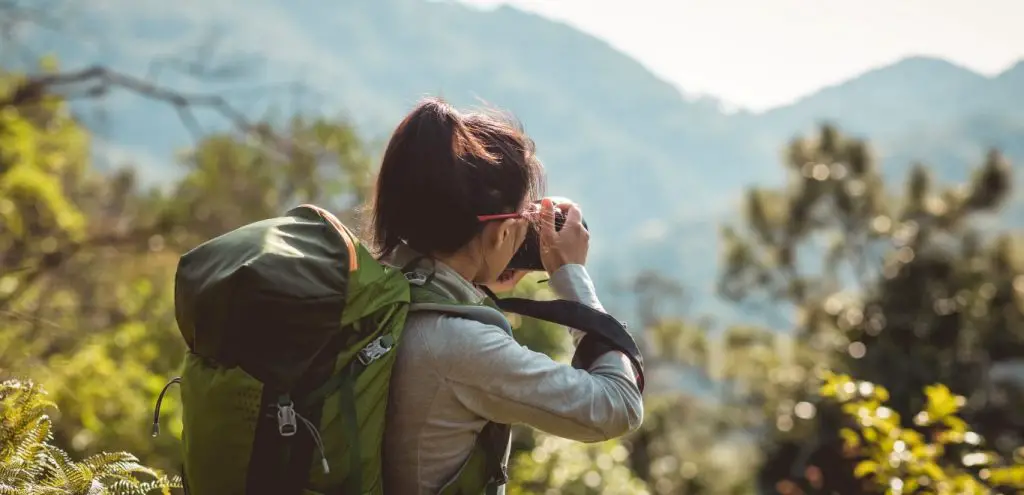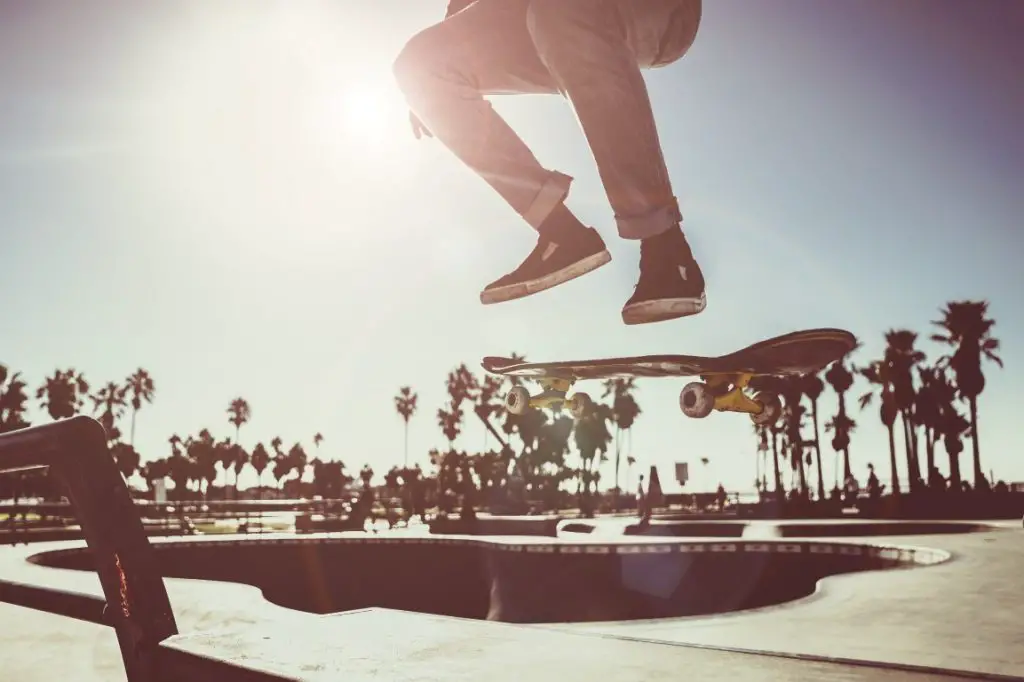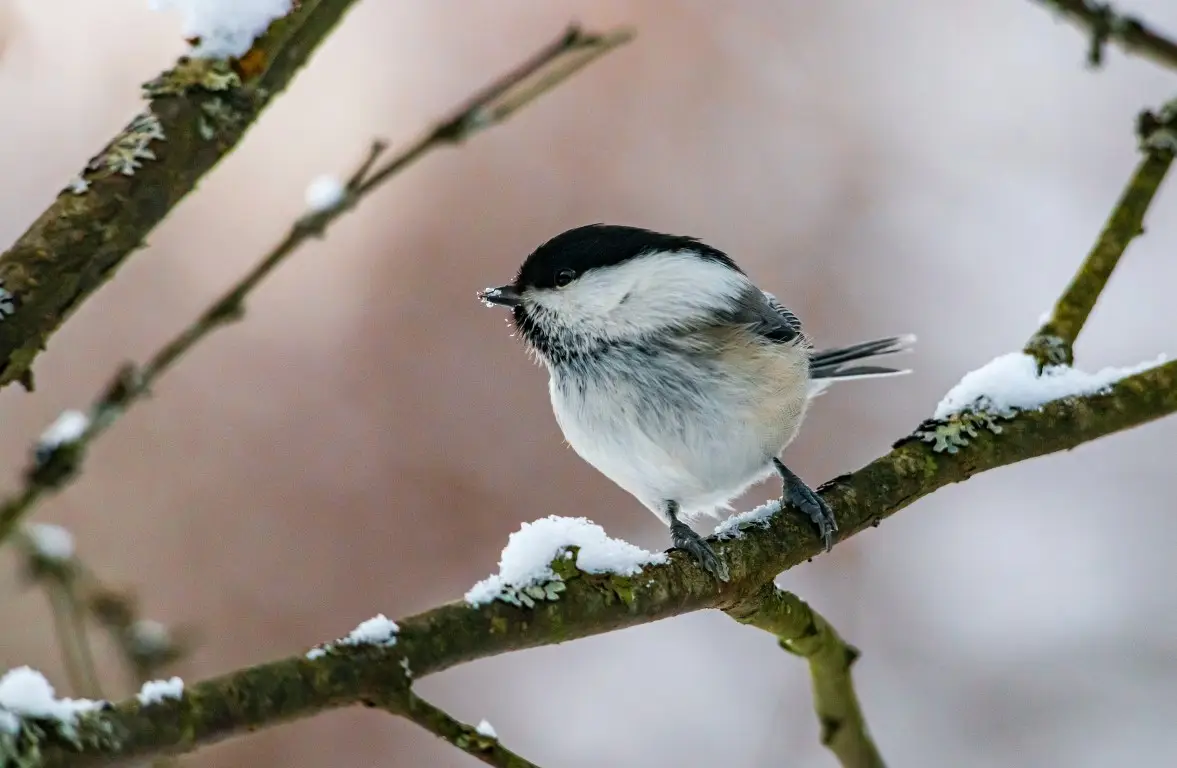
During my birding escapades, I stumbled upon the incredible utility of the spotting scope I frequently used for bird watching. To my delight, it became an instrumental tool in capturing some of the most awe-inspiring bird photographs I’ve ever taken.
In this article, I’d like to share my experiences with some of the top-rated bird spotting scopes I’ve used, hoping it helps fellow bird enthusiasts make an informed choice.
Keep scrolling!
My Top Pick:
• Kowa TSN-884
Why Use a Spotting Scope for Birding and Photography?

One of the primary reasons I gravitate towards spotting scopes in my birding adventures is their unparalleled magnification and detail.
These scopes empower me to observe birds from a distance, revealing intricate details that are crucial for both species identification and ensuring that I capture the perfect shot.
Another game-changer in my photography journey has been the art of digiscoping. By ingeniously combining a spotting scope with my camera, I’ve been able to achieve super-telephoto shots, a feat that would typically require a prohibitively expensive lens.
Plus, check out the article on how to use a spotting scope for photography for a complete guide on how to use your spotting scope for photography, including the digiscoping technique.
Moreover, the financial aspect of digiscoping cannot be overlooked. This technique presents a cost-effective solution, serving as an affordable alternative to high-end telephoto lenses.
As a result, the world of bird photography becomes more accessible and less burdensome on the pocket.
Best Spotting Scopes for Birding and Bird Photography
1. Celestron Regal M2 80ED
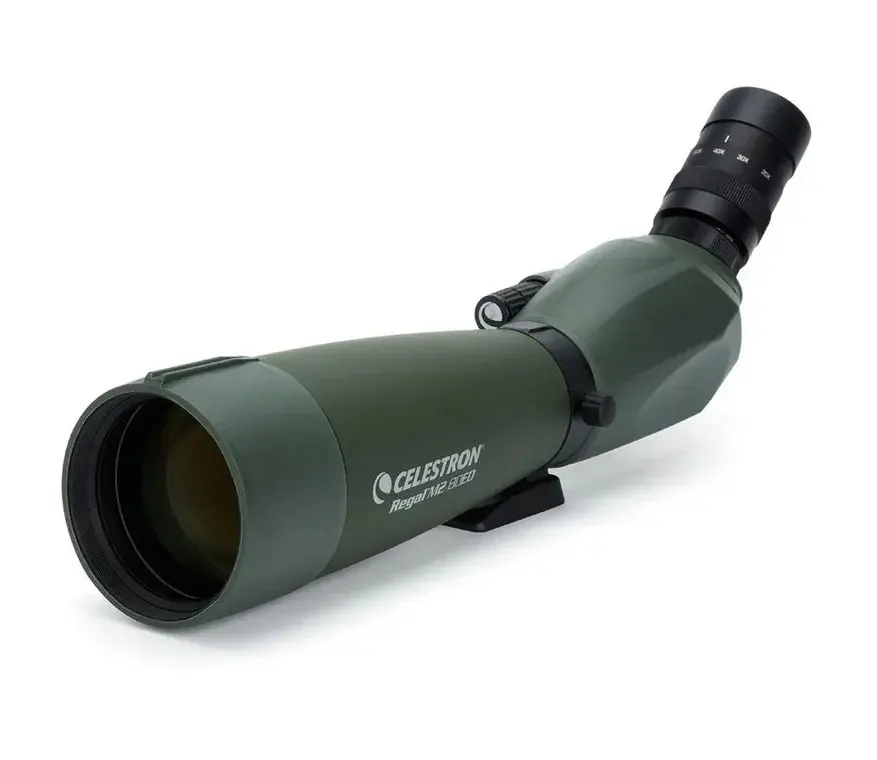

Source: celestron.com
Using the Celestron Regal M2 80ED has been a transformative experience for me.
Its 80mm objective lens combined with the ED glass consistently delivers sharp, detailed images, a must-have for my bird photography. While it’s a tad heavy, the 20-60x zoom eyepiece is incredibly versatile.
I still cherish the day I captured a kingfisher in mid-flight, a testament to the Regal M2’s unmatched clarity.
- Pros: Sharp images, versatile 20-60x zoom eyepiece.
- Cons: Slightly heavy.
- Recommendation: Ideal for those prioritizing image clarity.
2. Vortex Razor 20-60x85HD

Source: vortexoptics.com
The Vortex Optics Razor HD quickly became a favorite in my gear collection.
Its 27-60×85 angled design and high-definition imaging capabilities are nothing short of impressive. The triplet apochromatic lens ensures every shot is bright and vibrant.
I remember a mountain trek where its wide field of view was invaluable, allowing me to effortlessly photograph a swift falcon in action.
- Pros: Bright images, rugged build.
- Cons: Premium price.
- Recommendation: For professionals seeking top-tier quality.
3. Swarovski Optik ATS/STS 65HD

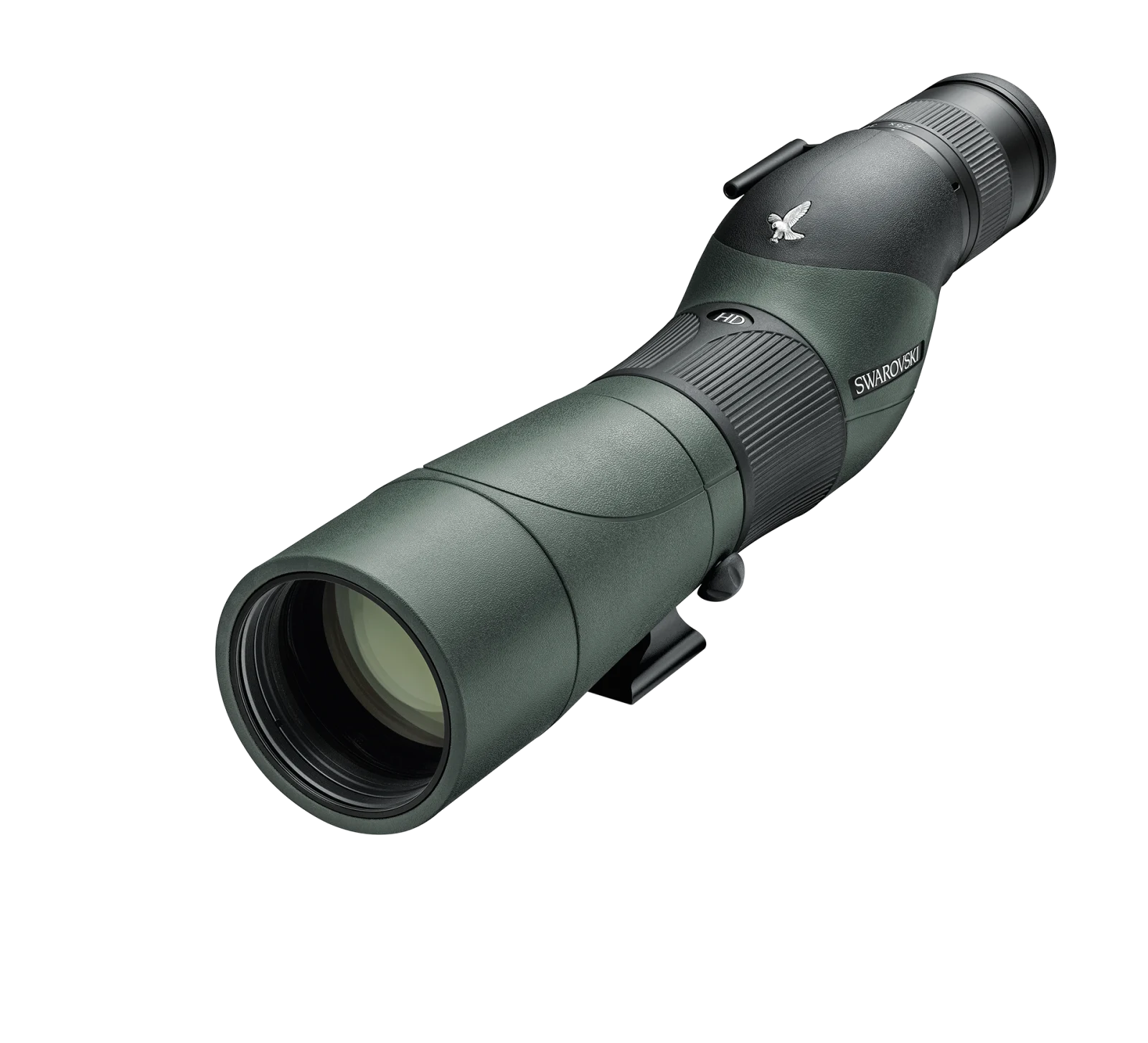
Every time I use the Swarovski ATS/STS, I’m reminded of its excellence.
Its compact design paired with HD lenses offers unparalleled color fidelity. The rapid focus mechanism is a lifesaver, ensuring I never miss a shot, even in challenging light conditions.
During a coastal birding trip, this scope’s prowess shone through, capturing the subtle color variations of wading birds with precision.
- Pros: Exceptional color fidelity, high-contrast images, and rapid focus mechanism.
- Cons: On the higher end of the price spectrum.
- Recommendation: Best suited for birders and photographers who are looking for premium quality without compromising on portability.
4. Zeiss Conquest Gavia 85

Source: zeiss.com
The Zeiss Conquest Gavia 85, with its 85mm objective lens, has been instrumental in enhancing my bird photography.
Its LotuTec protective coating ensures a clear view in all weather conditions. The fine focus facilitates quick focusing, especially when tracking fast-moving birds.
- Pros: High-resolution lens system, rapid focus feature.
- Cons: Slightly on the pricier side.
- Recommendation: Ideal for those who want a combination of quick focusing and high-resolution imagery.
5. Zeiss Victory Harpia 95
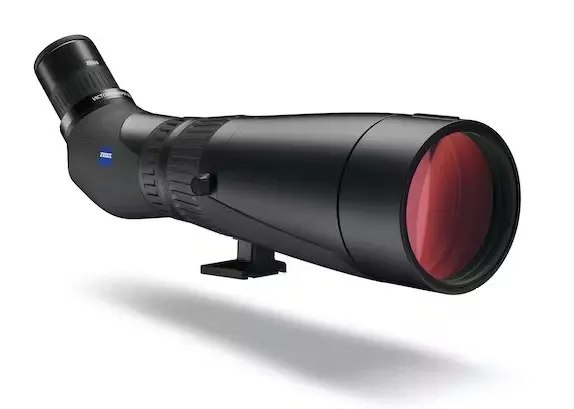
Source: zeiss.com
The Zeiss Victory Harpia 95 has been nothing short of a revelation in my birding adventures.
With its 95mm objective lens, the clarity and detail it provides are unparalleled. The Dual-Speed focus facilitates rapid focusing, ensuring I never miss a moment.
Its innovative optical system offers a wide field of view, capturing the beauty of birds in their entirety.
- Pros: Exceptional clarity, Dual-Speed focus, wide field of view.
- Cons: Premium pricing.
- Recommendation: A top-of-the-line choice for those who seek unmatched optical brilliance in bird photography.
6. Kowa TSN-884
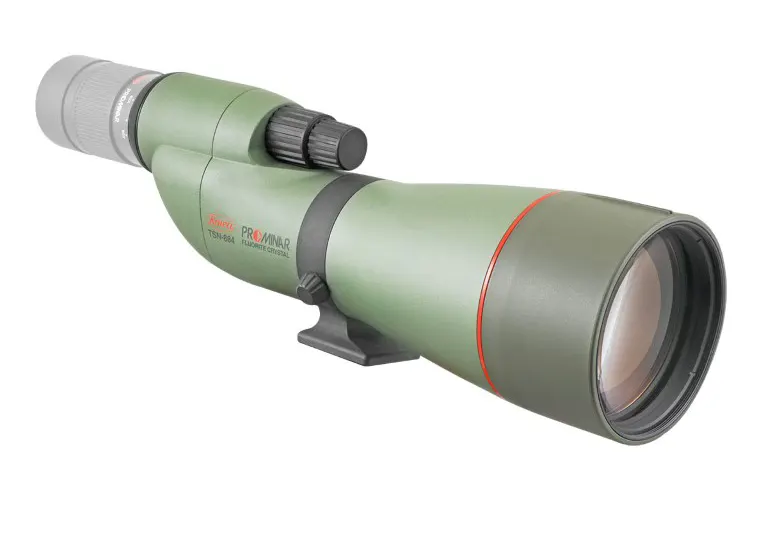
Source: kowaoptic.com
The Kowa TSN-884 has been a steadfast companion in my birding sessions.
Its pure fluorite crystal lens ensures images that are sharp, vibrant, and free from any chromatic aberration.
The scope’s rugged build ensures durability, and its waterproof design means I can venture out without worrying about the elements.
- Pros: Fluorite crystal lens for vibrant images, durable and waterproof.
- Cons: Heavier compared to some models.
- Recommendation: Ideal for birders who prioritize image quality and need a scope that can withstand the elements.
Additionally, you can explore more spotting scopes in my previous guide on the best spotting scope for photography.
Is a Spotting Scope Better Than a Telescope for Birding?
While telescopes are crafted primarily for stargazing and astronomical pursuits, spotting scopes are tailored for observing terrestrial subjects. Their compactness, ease of use, and upright viewing experience make spotting scopes the preferred choice for birding.
In contrast, telescopes, with their upside-down imagery and heftier design, don’t align well with the practical needs of birdwatchers.
So, the answer is yes. Based on my experience as a bird photographer, a spotting scope is more suitable for birding than a telescope.
What is the Best Magnification for a Spotting Scope for Bird Watching?
I found that magnifications between 20x-60x work best for bird watching.
At lower magnifications, I get wider views which are especially handy in forested areas. On the other hand, higher magnifications are perfect for open spaces, though I often need a steadier hand or a tripod to ensure clarity.
Factors to Consider When Choosing a Bird Spotting Scope
Selecting the right spotting scope involves considering several key factors. From magnification to price, each aspect plays a crucial role in enhancing the birding experience.
Here’s what I prioritize when making my choice:
- Magnification: 20x-60x is versatile for most scenarios.
- Objective Lens Diameter: Larger lenses gather lighter, crucial for dawn or dusk birding.
- Field of View: A wider view is beneficial for tracking moving birds.
- Build and Durability: Look for waterproof and fog-proof designs.
- Weight and Portability: Crucial for treks and hikes.
- Ease of Use: Smooth focus knobs and comfortable eyepieces enhance the experience.
- Price: Balance your budget with your requirements.
Digiscoping Tips for Bird Photographers
Digiscoping, the fusion of digital photography with telescopic spotting, offers bird photographers a unique avenue to capture distant subjects with remarkable clarity. While the method can yield breathtaking outcomes, grasping its subtleties is crucial to truly harness its potential.
So, if you’re keen on immortalizing the sights you witness through your spotting scope, these indispensable tips will lead you to exceptional photographs.
- Match your camera with a compatible spotting scope adapter.
- To reduce blur, employ a tripod and a remote shutter release.
- Capture shots during the golden hours of early morning or late afternoon for the most flattering illumination.
- Manual focus often yields sharper results in digiscoping than autofocus. Take your time to fine-tune the focus for the crispest image.
- Position your spotting scope at a downward angle to reduce the chances of internal reflections which can degrade image quality.
- Start with lower magnification levels for a wider field of view and gradually zoom in to find your subject. This makes tracking easier.
- Digiscoping has a learning curve. Regular practice will help you get acquainted with your equipment and improve your shot accuracy.
- Given the unique challenges of digiscoping, post-processing can be beneficial. Adjusting sharpness, contrast, and saturation can enhance your final image.
- Be mindful of atmospheric disturbances like heat waves or mist, which can affect image clarity. Opt for days with clear, stable air for the best results.
- Regularly clean your spotting scope lens and camera sensor to ensure dust or smudges don’t compromise your images.
Plus, I found an interesting video that shows how to take bird photography using the digiscoping technique. You can refer to it too.
Conclusion
In conclusion, navigating the world of bird photography and birding requires not just passion but also the right tools.
The spotting scopes I’ve highlighted have been instrumental in my journey, enhancing both my observation and photography experiences.
The fusion of spotting scopes with photography, especially through digiscoping, has opened up new horizons for capturing the beauty of our avian friends.
As we move forward into 2023, it’s essential to stay updated with the best equipment and techniques. Whether you’re a seasoned birder, an avid photographer, or someone just starting, I hope this guide serves as a valuable resource in your adventures.
Plus, remember the beauty of birding lies not just in the sights we capture but also in the moments we experience. Happy birding!
Justin Parker is a professional photographer and has been in the industry since 2007. He attended the University of Georgia. Justin combines his passion for photography and his interest in writing to give life to this blog which talks about photography in order to help and inspire young photographers.

